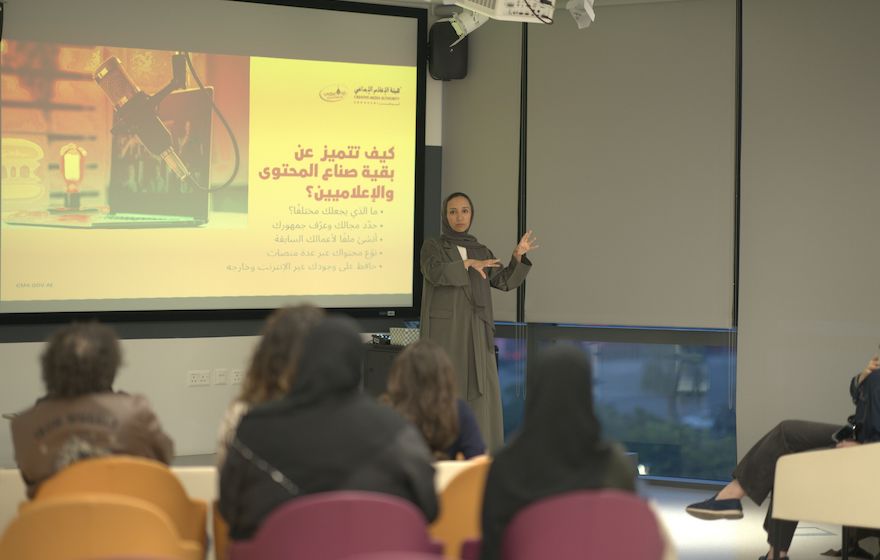No doubt Snap is the platform that popularized augmented reality. Vishal Badiani, Creative Strategy Lead at Snap Inc. MENA, explains how brands can make the best out of it.
What are the various ad solutions available to brands on Snap?
Snapchat has only offered advertising to brands since 2015 – we’re still a very young platform when it comes to advertising. However, we have caught up pretty quickly! The thinking behind our advertising formats is very simple. Snapchat isn’t mobile-optimized or mobile-first; it’s mobile-only. So, the first principle was to offer the best ad formats available on mobile: full-screen, sound-on video advertising units. The second principle was to only offer solutions that mimic the organic formats that have made Snapchat become so popular amongst the ever-growing Snapchatter community. Snap Ads are Snaps. Story Ads are Stories. Sponsored Lenses are Lenses. Sponsored Filters are Filters. We do not specifically develop advertising formats to elicit advertising dollars or grow advertising spends. The Snapchat user experience has always come first, and advertising formats are only made available once it’s clear Snapchatters understand and enjoy the formats organically first.
The other big changes in the last 12 months, from an advertiser’s perspective, have been on the back-end, with the development of audience insights, lifestyle-based audience segments, advanced targeting capabilities, and measurement.
What are some of the various possible uses of AR on Snap?
Having been the first platform to offer AR as a way to engage audiences meaningfully and at scale, we are pioneers and big believers in the power of AR. And it’s a space we have continued to invest in heavily, in terms of time, effort and talent. When it comes to possible uses, we’re fortunate enough to literally be working with a blank sheet of paper.
We have all kinds of tech and we’re able to build beautifully crafted experiences, but the tech itself is not interesting to brands – the use cases are. Most advertisers are leveraging AR for mid- and upper-funnel campaigns such as product or variant launches; sponsorship activations; tentpole campaigns during key moments (like National Day, Ramadan, Eid, and White Friday); brand (re)positioning and brand image campaigns. A great example would be a campaign developed for the Dodge car range, where a gamified Lens experience lets you experience the power of the Challenger, Charger, and Durango. The Lens not only delivered awareness, but also a massive amount of opt-in time spent with the brand. Over a three-week campaign, Snapchatters chose to spend over 2.2 years playing with the Lens. Moreover, by adding video products to the campaign, over 1,100 test drive requests were delivered. A genuinely full-funnel campaign, which over-delivered against both brand and business KPIs.
We’re seeing more and more lower-funnel AR tests pay off, with certain advertisers successfully using AR to attract new audiences (like Abdul Latif Jameel for the Corolla Hybrid launch) and drive footfall (Sephora during Ramadan 2019), web traffic and app installs (Ounass with always-on AR).
A few months ago, we ran our very first recruitment campaign in the region for McDonalds Saudi Arabia – driving more than 40,000 applications against a target of 10,000. We now even have some advertisers trialing always-on AR and in-store marker tech, which allows for mixed reality experiences.
Given Snapchat’s ability to reach over 34 million users across MENA, AR is proving to be a very powerful tool in the media mix for smart MENA marketers today.
How has AR usage on Snap been growing in the region?
If we take Saudi Arabia as an example, given it’s one of the biggest markets in the region, over 90% of Snapchatters play with AR Lenses every single day. And we have well over 15 million users in KSA. While they wouldn’t necessarily even know they are playing with “AR,” Snapchat has driven mass adoption of this technology and helped create a highly-engaged audience who have taught themselves to play with all kinds of AR experience – from Lenses that morph the face or add 3D objects to your background, to gamified experiences and fully immersive portals. This is a huge differentiator – our community comes to Snapchat to play with Lenses. I don’t believe this is true for other platforms, even if they copy our tech to some extent or another.
What are the best practices for brands to use AR on Snap?
- Think user first: how and when does your target audience play with Lenses, and what might they be seeking (for example, entertainment vs. stimulation vs. information)?
- Keep it simple: people won’t jump through many hoops to realize your marketing ambitions. And they won’t be able to absorb multiple messages through your Lens. Supplement the Lens with Filters and Video Ads to ensure the full array of messages you need to land are communicated to the right people at the right time.
- Include a trigger: to keep Snapchatters’ interest, prompt interaction with the Lens experience (for example, raise eyebrows or open mouth), and reward this interaction within the experience.
- Set-up campaign audiences: Snapchatters who played with your Lens have chosen to do so. They have opened the Lens carousel, stopped on your branded Lens icon, and played with your branded AR experience – after which they have shared or saved. This is a high-intent audience and you can re-target them with other communication.
- Include a deeplink: if you want to drive people who have played with your Lens to a website, video or to the app store, you can do so.
- Maximize organic usage: add organic Lens unlocks using the Snapcode across your owned media.
- Contribute, don’t interrupt: all our ad formats are formats that existed before ads did and so, our users love them.






